Cebu City, the Queen City of the South, beckons with its captivating blend of history and culture. From the iconic Magellan’s Cross, which marks the arrival of Christianity, to the hallowed Basilica Minore del Santo Niño, the city’s landmarks tell a spellbinding tale. Explore the Heritage of Cebu Monument, where Filipino-Chinese influences shine, and unravel the architectural tapestry of the Yap-SanDiego Ancestral House. With sacred Taoist temples and the vibrant Sirao Garden, Cebu presents a multifaceted cultural landscape, inviting visitors to enjoy its timeless allure.
This experience made our list of the 10 Best Historical Tours In Cebu City.
Key Points

- Cebu City boasts a diverse array of historic landmarks, from the Spanish colonial Fort San Pedro to the Basilica Minore del Santo Niño, the oldest Roman Catholic church.
- Magellan’s Cross marks the arrival of Christianity in the Philippines in 1521, offering insights into the spread of religious influence.
- The Heritage of Cebu Monument and National Museum showcase the city’s rich cultural heritage, reflecting Filipino-Chinese influences across different eras.
- The Yap-SanDiego Ancestral House and the Temple of Leah and Taoist Temple illustrate Cebu’s blend of architectural styles and religious diversity.
- Sirao Garden and Cebu’s floral landscapes provide a serene respite, allowing visitors to enjoy the city’s natural beauty.
Historic Landmarks of Cebu City
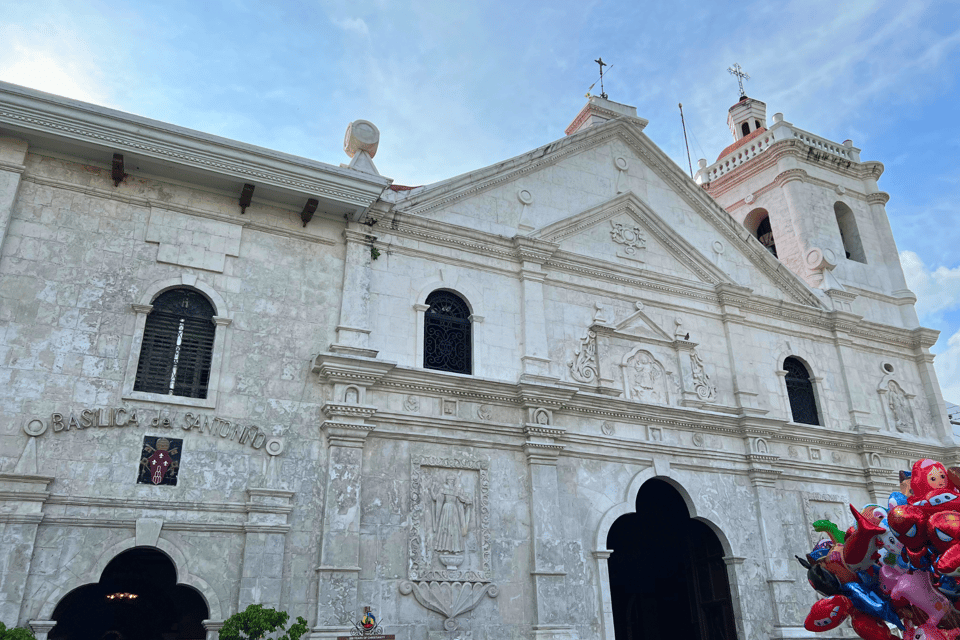
As the tour unfolds, visitors can explore Cebu City’s historic landmarks, each offering a glimpse into the region’s rich cultural heritage.
The iconic Fort San Pedro, a 30-minute self-guided tour, showcases the island’s Spanish colonial past. At Magellan’s Cross, travelers learn about the arrival of Christianity in the Philippines.
The Basilica Minore del Santo Niño, the oldest Roman Catholic church, stands as a testament to the country’s deep-rooted faith.
The Heritage of Cebu Monument and the Yap-SanDiego Ancestral House provide insights into the city’s Filipino-Chinese influences, while the National Museum and the Taoist Temple unveil Cebu’s diverse cultural tapestry.
You can also read our reviews of more historical tours in Cebu City
Magellan’s Cross and Christianity’s Arrival
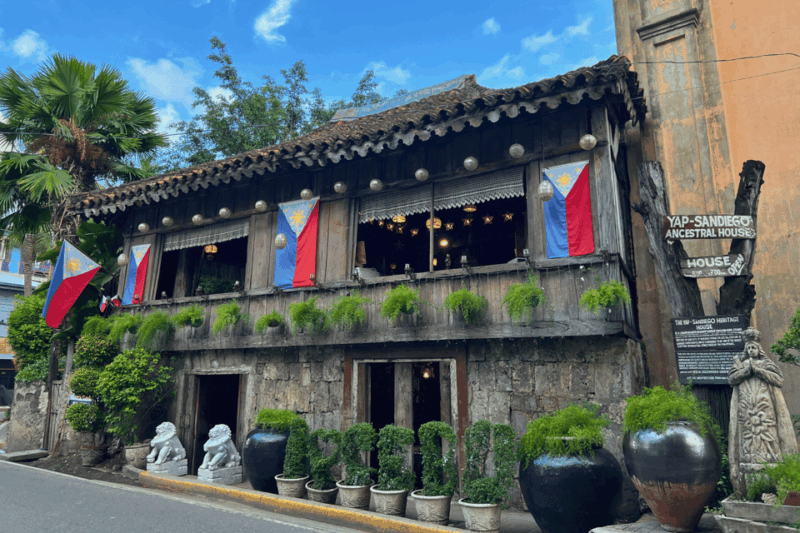
Magellan’s Cross marks the site where Christianity first took root in the Philippines. On this historic spot in Cebu City, Portuguese explorer Ferdinand Magellan planted a wooden cross in 1521 to commemorate the conversion of the local ruler, Rajah Humabon, and his subjects to Catholicism.
Today, the original cross has been encased in a bigger, ornate wooden structure to protect it. Visitors can view the famous cross and learn about the pivotal role it played in the spread of Christianity throughout the archipelago.
The site is an important symbol of the Philippines’ rich religious heritage and a must-see on any tour of Cebu City’s historic landmarks.
Basilica Minore Del Santo Niño
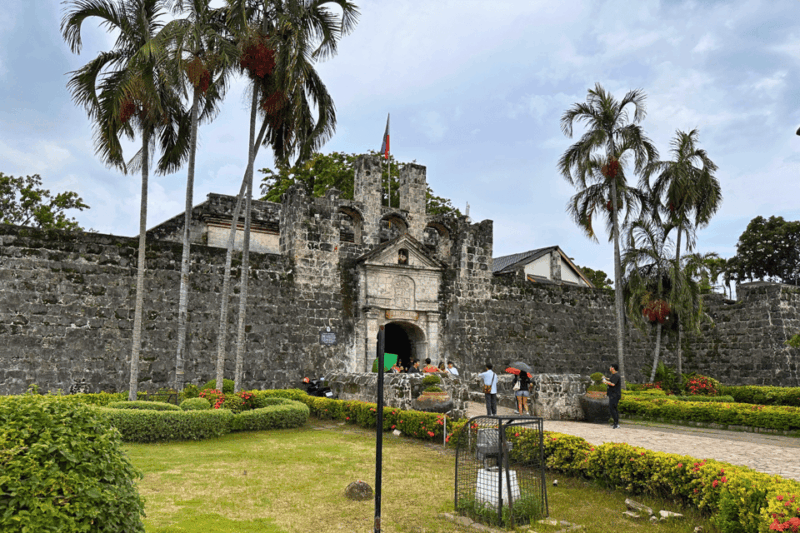
The Basilica Minore del Santo Niño is a Roman Catholic church located in the heart of Cebu City. It is home to the iconic image of the Santo Niño (Holy Child Jesus), which is believed to be the oldest Christian relic in the Philippines. The basilica’s history dates back to 1565 when the image was first discovered by Spanish explorer Miguel López de Legazpi. Today, the church is a significant pilgrimage site for Catholics, drawing millions of devotees annually. Its architectural style blends Spanish and Filipino influences, creating a unique and captivating structure.
| Architectural Style | Historic Significance |
|---|---|
| Spanish Colonial | Oldest Roman Catholic Church in the Philippines |
| Filipino Influences | Home to the Iconic Santo Niño Image |
| Baroque Elements | Pilgrimage Site for Millions of Devotees |
| Centuries-Old | Blends Spanish and Filipino Cultures |
Heritage of Cebu Monument and Museum
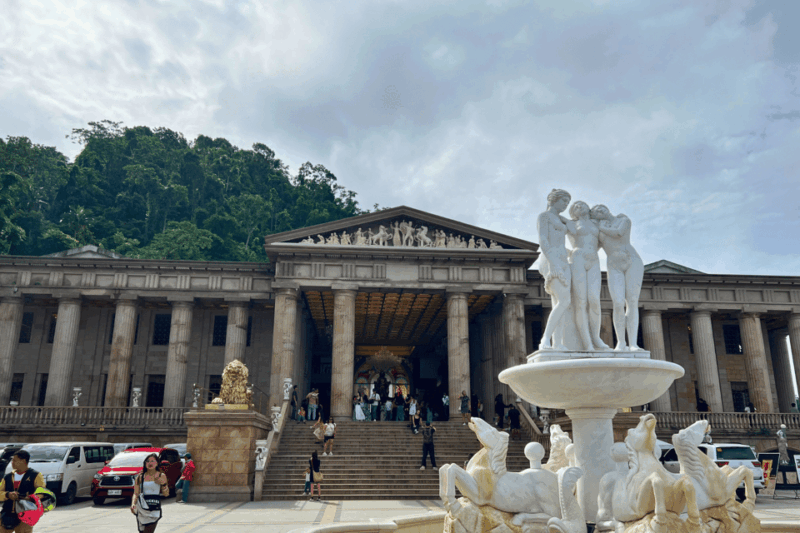
Where can visitors find the Heritage of Cebu Monument and Museum?
The Heritage of Cebu Monument and Museum are located in the heart of Cebu City. This impressive monument features 7 bronze statues depicting significant moments in Cebu’s history.
Nearby, the National Museum of the Philippines – Cebu offers a deeper dive into the island’s rich cultural heritage.
Visitors can expect to:
- Discover artifacts and exhibits showcasing Cebu’s pre-colonial, Spanish colonial, and modern-day eras
- Learn about the arrival of Christianity and the role of the Basilica Minore del Santo Niño
- Explore the diverse influences that have shaped Cebuano identity over the centuries
- Gain a comprehensive understanding of Cebu’s pivotal place in Philippine history
Yap-SanDiego Ancestral House
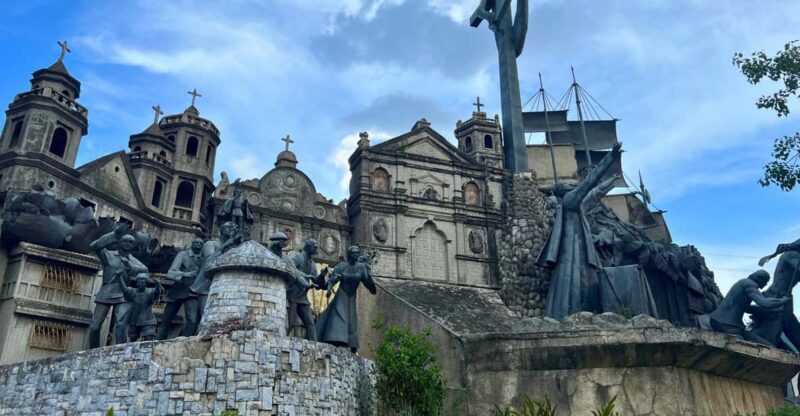
Visitors often find the Yap-SanDiego Ancestral House tucked away in the heart of Cebu City. This 19th-century mansion offers a glimpse into the lives of the Yap-SanDiego family, a prominent Filipino-Chinese clan.
The house’s intricate architecture blends Spanish and Chinese influences, featuring ornately carved furniture, antique decor, and a tranquil inner courtyard. Guests can explore the property’s three floors, which showcase the family’s heritage and the evolution of their lifestyle over generations.
The ancestral house provides a unique opportunity to learn about the cultural interplay between the Philippines’ Asian and European roots, as reflected in the daily lives of this influential family.
- Cebu: Oslob Whale Shark & Moalboal Sardine Turtle Adventure
- Cebu: Oslob Whale Shark Swim and Sumilon Island Day Tour
- Cebu Island Hopping With Lunch
- Moalboal Sardines & Turtle Snorkeling and Kawasan Falls Tour
- Cebu City: Uphill and Downhill Private Guided Day Tour
- Oslob Whaleshark & Canyoneering Adventure
Temple of Leah and Taoist Temple

Towering over the Busay Hills, the Temple of Leah stands as a grand testament to a man’s enduring love for his wife. This massive marble structure was built by Teodorico Soriano Adarna as a tribute to his late wife, Leah.
Visitors can explore the temple’s intricate architectural details and learn about the Adarna family’s history.
Next, the Taoist Temple offers a glimpse into the diverse religious landscape of Cebu. This vibrant temple features traditional Chinese architecture, colorful decorations, and serene gardens.
Visitors can observe the Taoist rituals and practices, gaining insights into this ancient philosophical tradition.
- The Temple of Leah is a marble structure built as a tribute to the owner’s late wife.
- The Taoist Temple showcases traditional Chinese architecture and Taoist practices.
- Both sites offer unique cultural experiences for visitors to Cebu City.
- These landmarks provide a deeper understanding of Cebu’s rich religious and historical heritage.
Sirao Garden and Floral Landscapes
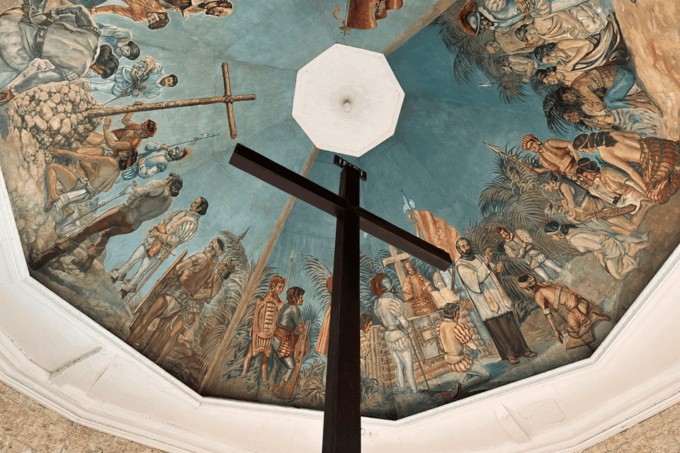
Amid the rolling hills of Cebu, the Sirao Garden captivates visitors with its vibrant floral landscapes.
This stunning garden is home to a kaleidoscope of colorful blooms, including the famous Cebu’s "Budding Roses", a local variety of vibrant pink flowers.
Visitors can enjoy the serene atmosphere, wandering through the meticulously manicured paths and capturing breathtaking photographs against the backdrop of the blooming flowers.
The Sirao Garden offers a serene respite from the bustling city, allowing visitors to appreciate the natural beauty and tranquility of Cebu’s floral wonders.
It’s a must-visit destination for nature enthusiasts and photography enthusiasts alike.
Transportation, Logistics, and Cultural Insights
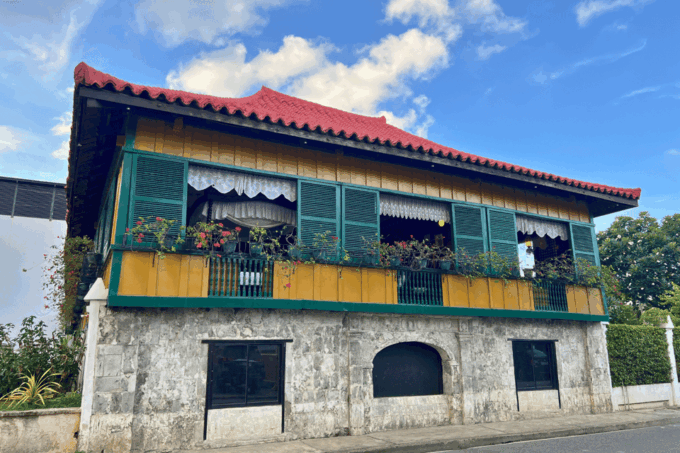
The tour includes convenient transportation and logistics to ensure a seamless experience.
Pickup and drop-off are provided within Cebu City and Lapu-Lapu City, with a specified location at booking for a smooth start.
Travelers will enjoy a private, air-conditioned car with a driver-guide throughout the tour.
This comprehensive package also covers fuel costs, tolls, parking fees, entrance fees, and passenger insurance.
The tour offers a deep cultural insight into Cebu’s heritage, including:
- Exploring the arrival of Christianity at Magellan’s Cross
- Visiting the oldest Spanish fort and Roman Catholic church
- Discovering the Filipino-Chinese influence at the Yap-SanDiego Ancestral House
- Taking in the diverse historical depth of Cebu City
Frequently Asked Questions
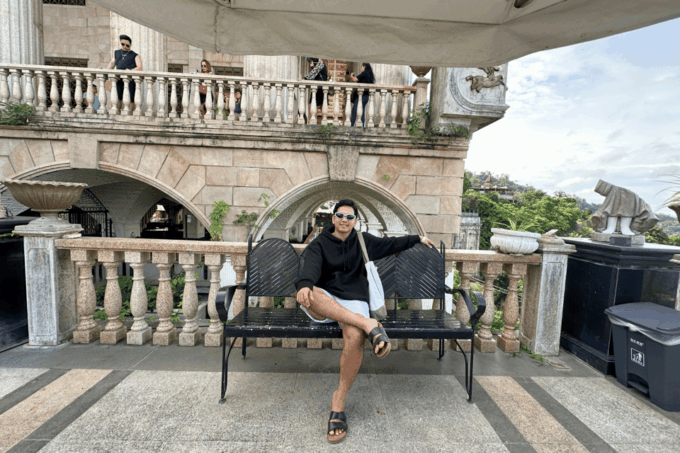
Is the Tour Suitable for Children?
The tour is suitable for children as it includes self-guided tours at historical landmarks, allowing families to explore at their own pace. Children may enjoy learning about Cebu’s rich heritage and culture during the 8-hour tour.
Can I Customize the Itinerary for the Tour?
Yes, the itinerary can be customized. The tour operator allows you to make specific requests or adjustments to the itinerary. Additional stops or activities not listed may incur extra charges, but the operator is flexible in accommodating your preferences.
What Should I Bring for the Tour?
You’ll need comfortable walking shoes, sun protection, a camera, and any necessary medications. It’s also a good idea to bring water and snacks to keep you refreshed throughout the day.
Are There Any Dietary Restrictions for the Included Lunch?
The tour includes a provided lunch, but the website does not specify any dietary restrictions. Guests should contact the tour operator in advance to inquire about accommodating any dietary needs or preferences.
Do I Need to Purchase Travel Insurance for the Tour?
The tour price includes passenger insurance, so additional travel insurance is not required. Customers can simply show up for the tour without needing to purchase any extra coverage.
Recap
Cebu City’s rich history and diverse culture come alive through its captivating landmarks. From the iconic Magellan’s Cross to the vibrant Sirao Garden, visitors can enjoy the city’s unique blend of Filipino, Chinese, and Spanish influences. Whether exploring the Basilica Minore del Santo Niño or discovering the Yap-SanDiego Ancestral House, Cebu offers a journey of cultural appreciation and historical exploration.
You can check availability for your dates here:More Historical Tours in Cebu City
More Tour Reviews in Cebu City
- Cebu City Heritage Tour w Sirao Flower Farm & Temple of Leah
- Cebu: Whalesharks, Sumilon Sandbar & Tumalog Falls Tour
- Cebu: Exploring Cebu City’s rich history and Uphill Tour
- Cebu: City Historical Tour
- Cebu: Kawasan Falls Canyoneering Tour with Ziplining
- Cebu: Whale Shark Swim, Kawasan Falls & Moalboal Sardine Run
Not for you? Here's more nearby things to do in Cebu City we have reviewed
- Cebu City Heritage Tour w Sirao Flower Farm & Temple of Leah
- Cebu: Whalesharks, Sumilon Sandbar & Tumalog Falls Tour
- Cebu: Exploring Cebu City’s rich history and Uphill Tour
- Cebu: City Historical Tour
- Cebu: Kawasan Falls Canyoneering Tour with Ziplining
- Cebu: Whale Shark Swim, Kawasan Falls & Moalboal Sardine Run
- Oslob: Whale Shark Swim & Aguinid Falls Canyoneering Tour
- Cebu: Cebu City and Mactan Island Tour
- Cebu: Sumilon Isand Whale Shark and Turtle Snorkeling Tour
- Small Group Cebu City And Uphill Mountain Tour
- Cebu Half Day City Tour (Private Tour)
- Cebu City: Best of Cebu Full-Day Guided Sightseeing Tour
